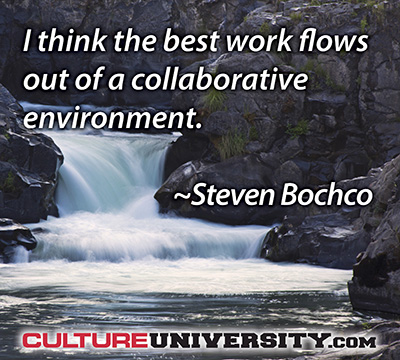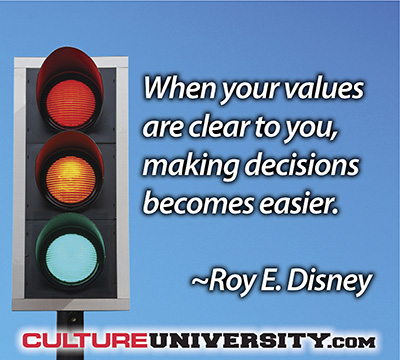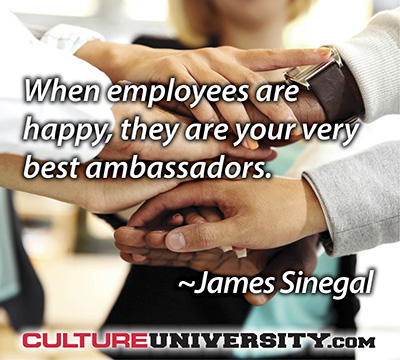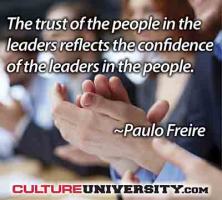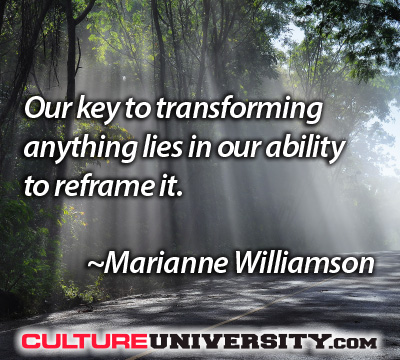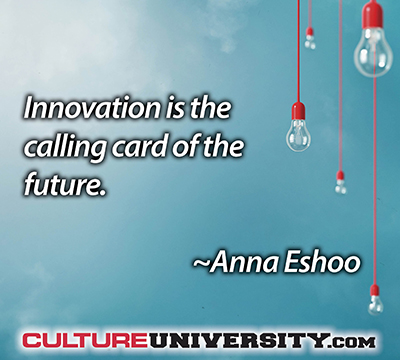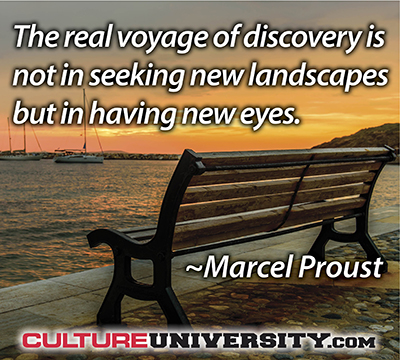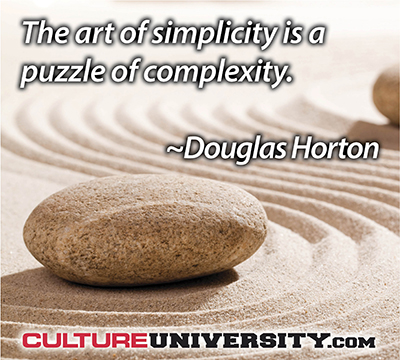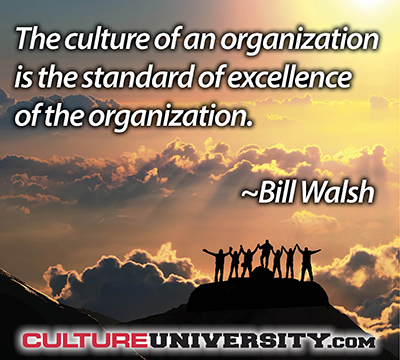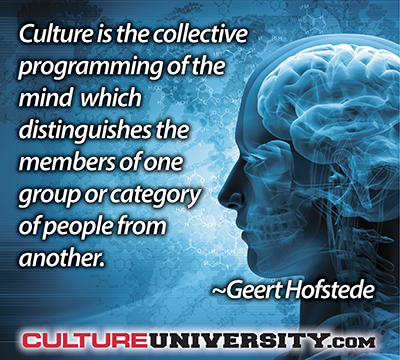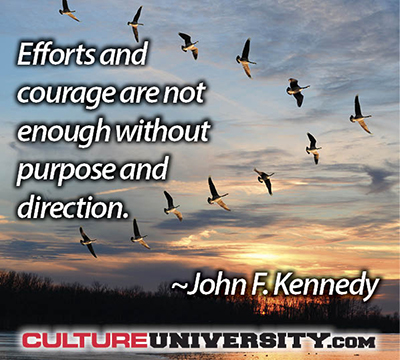Collaboration is the buzz word of the 21st century and for good reason. Today employees work on all kinds of teams and cross functional groups to help firms remain agile and productive in response to market change and global business complexity. This basic fact of work-life places the necessity to build a culture of collaboration at the forefront of work.

Positively impacting society on a global scale through culture awareness, education and action.
What’s your perspective on corporate values? Are they silly, meaningless words that have to be invented to complete a vision, mission and values trio? Or are values a competitive edge that helps attract and retain the right people for your organization?
“Our people are our greatest asset” has been uttered by many CEOs for a long time. However, most of them don’t focus enough on employees’ experience because they are too busy setting their sights and business targets on improving the customers’ experience.
There is an up and coming leader in a global IT firm, Ray, who is known as the smartest guy in the room. He has been a top performer for years, is well known for his executive briefings of customers, and his solid strategic sense. In fact, he’s so smart that whenever he goes into a meeting with colleagues, everyone waits for him to weigh in on the issue of the day, since there’s no point in having a different view. You’re most likely going to be made wrong. He also has the ear of the Senior Vice President, so Ray speaks with power as well as smarts.
In an earlier post, ‘Culture for the age of ideas’, we argued that the culture of many organisations is still unthinkingly based on the old industrial-era mindset of scientific management and command and control. We suggested that there are a number of persistent organizational behaviors that have their origins in this outmoded culture that are now actively preventing the things that modern organisations know they most need: employee engagement, commitment and creativity, for example. This idea was fully explored in our book. My Steam Engine Is Broken: Taking the organization from the industrial era to the age of ideas.
If an organization wishes to inspire and sustain innovation, a culture of innovation is required. And while there are many variations and hybrids within innovation cultures, the basic components remain constant. Of course, this does not mean that innovation can’t survive in a non-innovation culture; it just faces much longer survival odds and its success will likely be despite the organization’s culture and not because of it.
One of the greatest challenges our times is the deliberate change of behaviors, particularly when the behaviors of a larger group of people are at stake. Most people know how challenging it already is to change a simple operational process. Now, when it comes to behavior, we touch the most complicated thing in the world—human beings. There’s nothing more complex, capable and creative, but also odd and cruel than us out there.
What Steve Jobs understood, that many others do not, is that it takes much more effort to achieve simplicity than it does to achieve complexity. Everything naturally expands towards the complex, unless very tightly driven the other way, and cultures are no different.
How often have you heard somebody talk about the urgent need to change the culture? They want to make it world-class. To dispense with all the nonsense and negativity that annoys employees and stops good intentions from growing into progress. To bring about an entirely different approach, starting immediately. These culture critiques are as common as complaints about the weather — and about as effective. How frequently have you seen high-minded aspirations to “change the culture” actually manage to modify the way that people behave and the way in which they work? And how often have you seen noticeable long-term improvements?
There is unprecedented evidence regarding the success-relevancy of an organization’s culture. Cooperation, leadership, innovation, mergers and acquisitions, strategy implementation, etc.—virtually everything is deemed to be depending on culture. A culture related competitive advantage is considered to be extremely hard to imitate. According to culture expert Larry Senn, “after 50 years, we’ve got there in terms of people getting that culture makes a difference.”
Organisational Culture has been a focus for business for more than three decades and demands attention as organisations try to attract talent, overcome low engagement levels, and build their reputations and sustainability. Culture (including organisational culture) reflects in shared meaning, characteristics and behaviour (internally and with the outside world). A workable definition derived from Hofstede for organisations, “it is the mental programming that we inherit from our ancestors and pick up from the people around us.”1 In juxtaposition is Jung on the development of individual character, “The more intensively the family has stamped its character upon the child, the more it will tend to feel and see its earlier miniature world again in the bigger world of adult life. Naturally this is not a conscious, intellectual process.”2
“We don’t have time for the soft stuff” was recently heard in a senior leadership meeting. “Let’s get back to the real work—our budget and strategy for next year.” This team had just been through a training workshop that focused on leadership styles, their impact on the workforce, and the need to shift their behaviors toward more openness and collaboration. Comments on the “soft stuff” have been around for some time. It’s amazing in this time of work complexity, ambiguity, vulnerability, and interdependence, that some leadership still undervalue the importance of the human side of enterprise.
Research shows that organizations with high performance over a sustained period of time achieve their success because their people are coming to work each day to do more than punch the clock. Organizations are great not just because a leader is doing something great, organizations are great because lots of people are going above and beyond their job description and making a difference every day.
This is the 100th post on Culture University and it’s only fitting I summarize 100 of the top culture insights shared by the outstanding line-up of culture expert and guest authors over the last two years. The purpose of CultureU is to positively impact society on a global scale through culture awareness, education and action.
We’re making progress bringing visibility to culture facts and fundamentals that go beyond all the superficial and over-simplified culture content. These insights barely touch the surface of the important subject of culture but hopefully it will spark your interest to learn more.
I continue to learn at a fast rate from the CultureU faculty and guests. You may download the complete list of Top 100 Culture Insights at this link.
Here are 15 that stood out to me personally.
No matter how you define workplace culture there’s no denying that relationship dynamics play a primary role in how we do things and how we get along.
The most influential relationship in the workplace is the boss-employee relationship, and because of this even departmental leaders and middle managers can influence and dramatically shift culture in their own area of control, whether it be in a franchise, a small business or the department of a global company.
